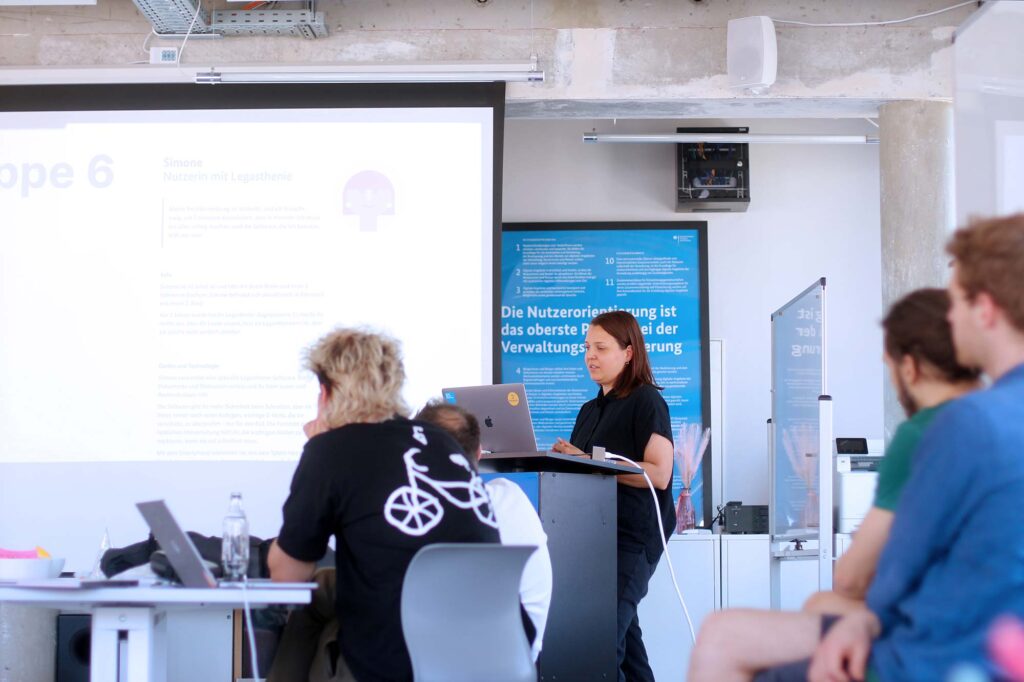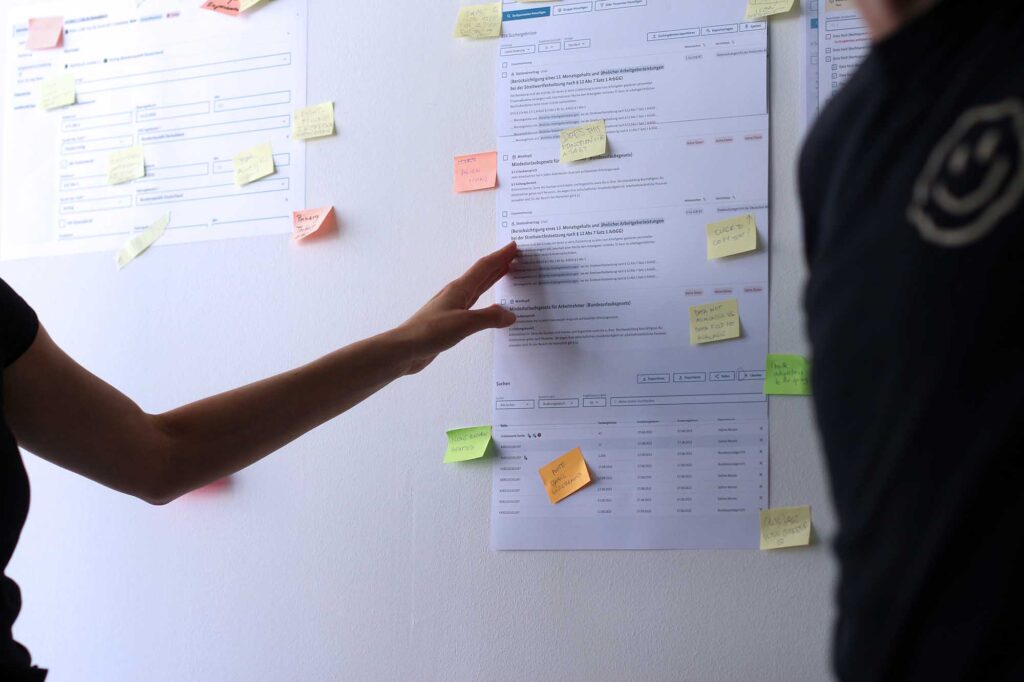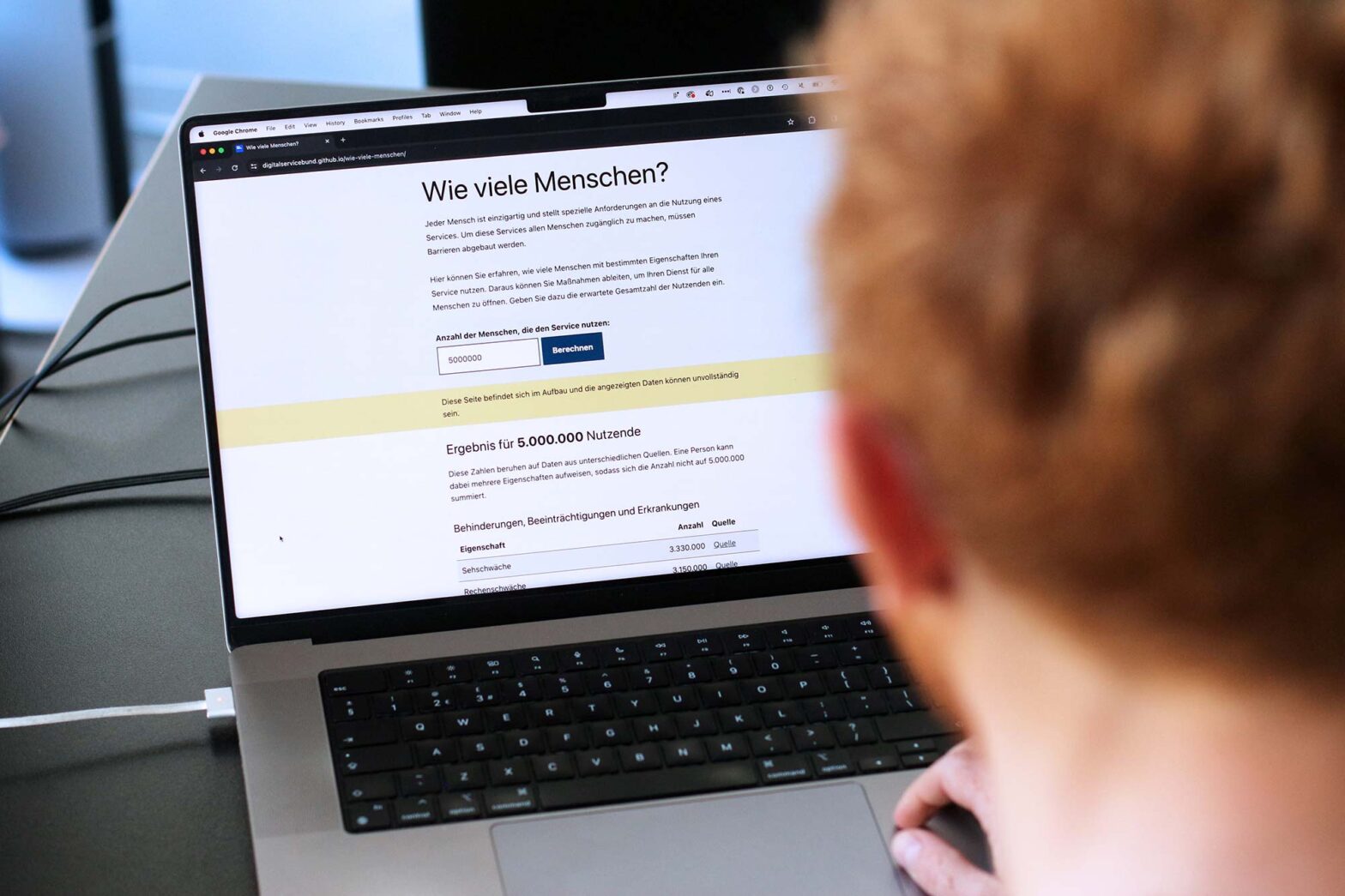This was a very intensive week. But to be fair, it included Global Accessibility Awareness Day, for which I really wanted to get some things done.
But let’s look at things one by one.
Celebrating Global Accessibility Awareness Day
On Thursday, we published our first blog post on accessibility. The German title translates to ‘No digital offering is fully accessible—how we want to change that’. It’s 1,600 words long, and our comms colleagues did not even try to shorten it.
The responses to a character-limit-breaking LinkedIn post were very positive. In those additional 473 words, I’m reflecting on our journey at DigitalService and my personal learning experience over the years. I am expressing my gratitude to many colleagues I had the chance to work with and learn from.
Still very beta, we launched ‘Wie viele Menschen?’, our version of the UK Department of Education’s ‘How many people?’ tool. They share function, format, and structure. But they do not share any code. Given both are open source and their source code is on GitHub, this makes less sense. For my colleague Merlin, it was a learning challenge, so he could use some of his Learning & Development time to work on it.
@andyjones.bsky.social — have a look at what we did, building on your team’s work: digitalservicebund.github.io/wie-viele-me…
— Martin Jordan (@martinjordan.com) May 15, 2024 at 23:49
[image or embed]
We kept tweaking it, and colleagues kept finding bugs. It will take a few more days before we are finished with the work. The beta banner on the page is still very justified.
On Slack, we were asked about bringing the tool to a proper government subdomain. I’m a big supporter of that, but I want it to be a bit more mature. We have a discovery problem for the tool anyway. So, we need to figure out how to ensure its findability. Currently, only social media links and a reference from the blog post let you find it. An obvious entry point would be our website. We’ll look into that in the coming days.
A wonderful, surprising thing was a sudden parallel exchange on Bluesky and LinkedIn with folks from other nations discussing how they could create their version of the tool. I wonder if we could actively facilitate it with the International Design in Government community.
As part of Global Accessibility Awareness Day, we also ran our 6th pizza-powered accessibility check. I counted some 21 people on our top floor around lunchtime when Marie, Christin and I gave an introduction to the format, project and accessibility personas.

We ran a parallel station for each of the 6 accessibility personas. We placed the ones with sound, like Pawel with autism and Ashleigh with a screen reader, in smaller rooms. I looked after Claudia, who is using 400% zoom, and we found many things that are hard to navigate in the interactive application we tested.
The team that wanted to have their pre-beta service tested is building on some legacy code developed by a supplier. It’s creating an interactive tool that is inherently more challenging to use than a more linear government form. So, the accessibility check yielded very fruitful and actionable results for the team to act on.
We have found some routines with the format and accessibility personas. Internally, we had good documentation on how to prepare and run the pizza-powered accessibility check. So, I look forward to supporting more editions in the coming month when other service teams get closer to releasable betas.
Reviewing design across legal information system products
In our legal information system project, we have 3 separate products we are developing at the moment. All of them are for clerks of federal courts to use. Designers have moved between them, and the products share a code base. But things look and feel a bit different.
So Agnieska invited all of the designers on the 3 work streams and me to a cross-project design review. We gathered in a room, put all relevant printouts of designs out and took a closer look together. We looked for opportunities to align elements, components and patterns.

The users of the products are different internal groups in the federal courts. They won’t be switching the products or even seeing the other ones. But especially for usability, the alignment matters. If one pattern performs better than the other, we should be using it across products.
We finished the sessions with a prioritised list that the designers will pick up next week.
Taking the stage at UX Camp Europe
On Friday afternoon, I realised UX Camp Europe was happening over the weekend. I forgot to put it on my calendar and discarded the idea of attending spontaneously. The week was a bit too much.
But then, on Saturday afternoon, I felt differently. I reached out to one of the organisers, and I asked if I could stop by. I could.
You really shouldn’t work on Sunday, I know! But then, attending UX Camp Europe isn’t really work. It’s an energetic community bar camp that has been running for 15 years. I spoke there for the first time 11 years ago – meeting people I am still in touch with today and learning about Laurea University, where I later did my MBA studies.
On Sunday morning, I rapidly put a talk together titled ‘Doing good, doing great work, and strengthening democracy’. For the first time, I used our 6 organisational values to structure the talk and work. Our values enable the work and are their proof at the same time. So, using them as a structural element felt obvious.
#OpenByDefault —following our 6 organisational values, I gave a talk at # UXCE24 titled ‘Doing good, doing great work, and strengthening democracy’. I spoke about our work at Digital Service. 📸 People in the audience found their friends in my team. Slides are here: github.com/digitalservi…
— Martin Jordan (@martinjordan.com) May 19, 2024 at 16:28
[image or embed]
Interest in public service design work remains high. I had some 40 people attending my session, which ran in parallel to 9 other great topics.
It’s been 8 years since I last spoke at UX Camp Europe. I had just joined the Government Digital Service as a Lead Service Designer working on GOV.UK Registers. Much has happened since then, but so much more needs to happen now. So, seeing people ask dozens of questions and express their interest in this work makes me hopeful—because digital government transformation remains a multi-decade effort. And this work needs the next generation of curious and caring challengers to continue it.
Some attendees already booked Mega Mentor time with me for a follow-up chat, and others have expressed interest in applying for roles in our team in the future. I also cycled to the edge of Berlin for some hours, so it was time well spent.
Launching the Helsinki Conference 2024
On Monday night, I quickly helped the folks preparing the Helsinki Conference 2024 create a full event website. We provided the structure; they put all the content together, which I helped review.
I changed the usage of our International Design in Government brand elements a little to keep things fresh yet familiar. I was able to build on Stephen’s original code, which is all neatly sitting on GitHub, where I can directly edit and deploy it to the website. It’s an effective setup for me allowing to make code changes within minutes.
Join us in Helsinki from 1-2 October for our first in-person #GovDesign conference in 5 years. We’ll discuss ‘Systems change and futures’ — and tickets are available free of charge for everyone working in the public sector. Read more and get your ticket: international.gov-design.com/helsinki2024/
— Martin Jordan (@martinjordan.com) May 14, 2024 at 23:27
[image or embed]
The topic is broad: ‘Systems change and futures’. Tickets are free, released in batches and for different regions in the world.
I will be looking forward to joining the 250 people in person and plan to make some content contributions, too.
Running for the community spirit
Last year, I missed it because I wasn’t in town. And I did much worse than 2 years ago in the 5×5 km relay race. We had 5 Digital Service teams, and all clocked 25 km in total. Some did so in less than 2 hours, others closer to 2:30. Ours, the ‘Rocky Road Runners’, was not the fastest—but the opposite. That didn’t matter. We had a chatty 4 hours in the park with our colleagues for team-building. With some people dropping out on the day, we even had 2 May new starters join us at the last minute, which was fantastic.

An unbelievable 5127 teams ran over the course of 3 days. And while standing out by design doesn’t matter here, we might redesign the shirts for next year. Possibly, we looked a little dull in our simple blue shirts compared to the other public sector teams. If even the Pension Service and Ministry of Justice are more fashionable than we are, there could be work to do.
What’s next
I also spent significant time preparing for people’s performance reviews this week. We have a management offsite next week for which I still need to condense summaries for everyone in the design and user research discipline.
On Tuesday, my colleague Jana, our senior legal counsel, and I will discuss procurement and user-centred design. Our input will revolve around ensuring that proper user-centred design practice is woven into contractual agreements when commissioning public services. Of course, we will also discuss the Service Standard as our go-to vehicle for referencing contemporary ways of working and how we bring our ministerial partners on board.
Later in the week, Maria and I plan to do much-overdue annual community planning for our NExT user-centred community. We ran one gathering on plan language in early February but lost some momentum. We aim to run the next gathering on accessibility in the first half of June. And we should do some planning for the rest of the year.

